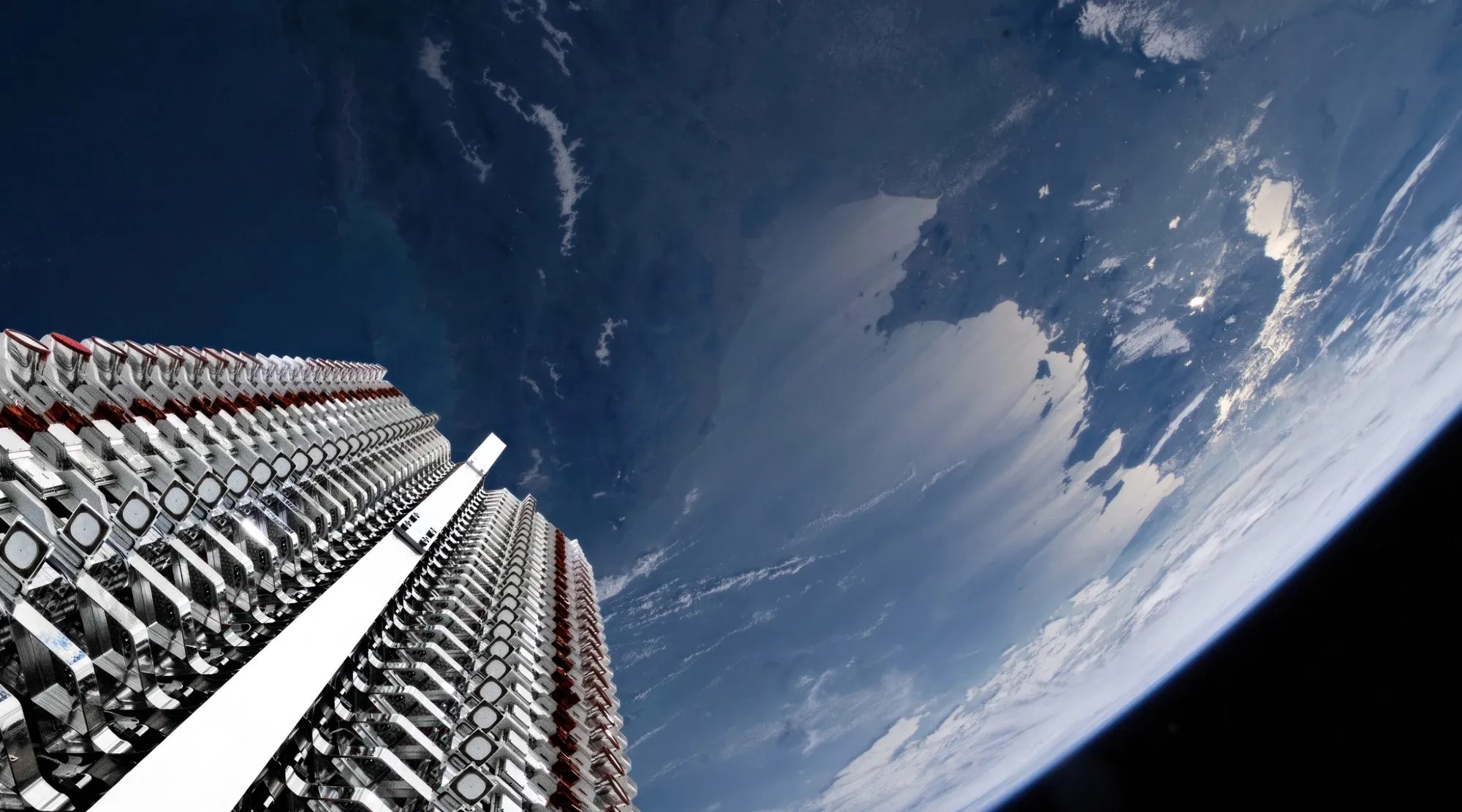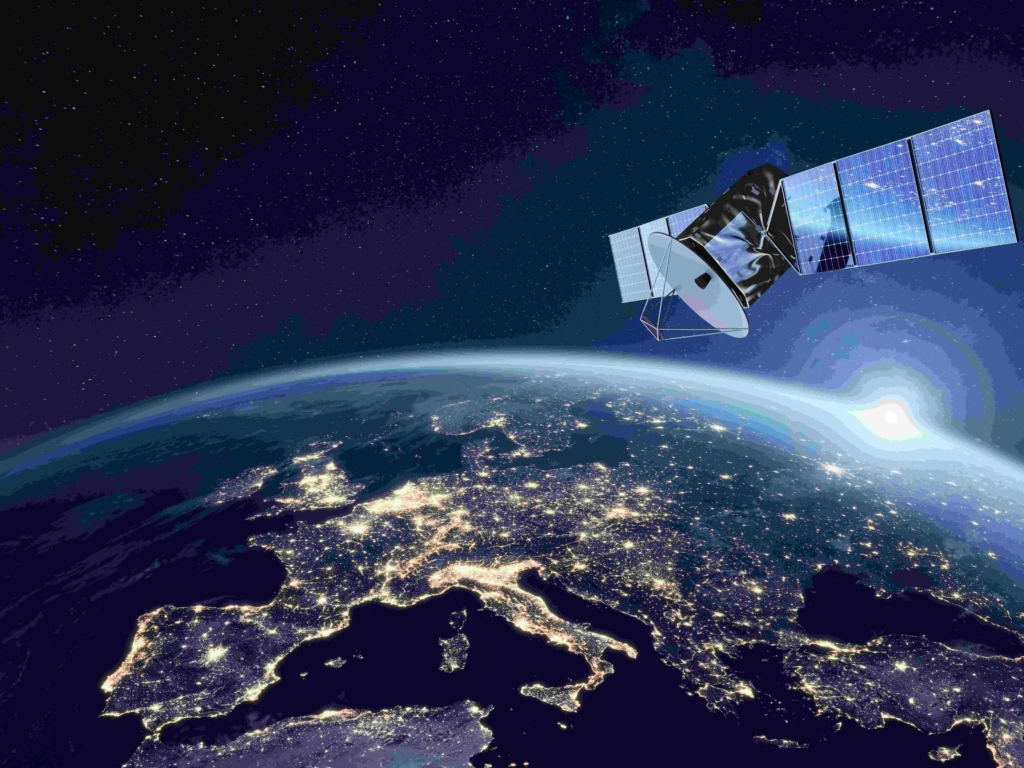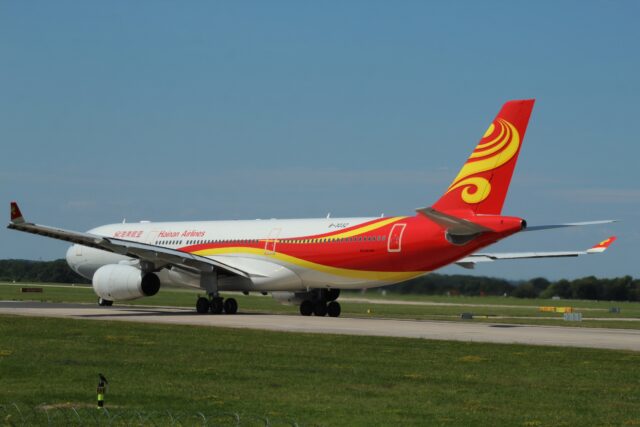The new danger of space debris: Dead satellites are polluting Earth’s upper atmosphere

October 26, 2025

A new concern is emerging high above Earth, not from the satellites that orbit the planet, but from what happens when they fall back down.
A study published in New Scientist warns that as thousands of satellites burn up during re-entry, they are injecting metals and exotic alloys into the upper atmosphere, creating what some researchers now call an “accidental geoengineering experiment.”
From orbital congestion to atmospheric contamination
The number of satellites orbiting Earth has increased significantly over the past decade. Miniaturised designs and cheaper launches, driven by private constellations like SpaceX’s Starlink and Amazon’s Project Kuiper, have fuelled a rapid expansion of low Earth orbit.
There are now more than 15,000 active satellites, and projections suggest that as many as 70,000 may be in place by 2030 if current plans proceed.
Each of these satellites has a limited operational life of around five years before it is deliberately steered into the atmosphere to avoid contributing to space debris. When they burn up, their components release clouds of aluminium, titanium, nickel, copper, and exotic alloys, along with soot and reactive gases, into the mesosphere and stratosphere.
According to estimates by astrophysicist Jonathan McDowell at the Harvard-Smithsonian Center for Astrophysics, about 900 tonnes of spacecraft material now vaporise in the upper atmosphere every year, equivalent to roughly 5 per cent of the mass naturally injected by meteoroids.
What happens when satellites burn up?
Aluminium makes up nearly two-fifths of a typical satellite. When it combusts during re-entry, it forms aluminium oxide, or alumina, a highly reflective compound known to react with and deplete ozone. Researchers in the 1990s observed temporary “mini ozone holes” after rocket launches that released similar alumina plumes.
The concern now is scale. “It is like a mini geoengineering experiment,” says Professor Eloise Marais, an atmospheric chemist at University College London.
“We’re introducing materials into parts of the atmosphere where they were never meant to be – and we don’t yet know the long-term chemical effects.”
Satellite burn-up also produces black carbon (soot), which absorbs sunlight and warms the air around it. While the total amount is small compared with ground-based pollution, these particles form much higher up, where rain cannot wash them out.
Once trapped in the mesosphere (between 50 and 80 kilometres up), they can persist for years, gradually descending into the stratosphere, where most of the planet’s protective ozone resides.
Research shows a steep rise in atmospheric metal and soot levels
Inventories of space-sector emissions compiled by scientists at UCL show that before 2020, the concentration of metals and soot in the upper atmosphere grew by around 5% per year. Since then, that rate has tripled.
“Every year we are seeing those emissions getting bigger,” says Matthew Barker, a co-author of the study. “Especially since 2020, the growth has been quite steep and getting steeper as we see more satellites launched and de-orbited.”
The European Space Agency estimates that about three defunct satellites or rocket stages burn up in Earth’s atmosphere every day. Many of these belong to short-lived constellations that are replaced regularly, meaning re-entry events will soon become routine.
Climate modelling suggests potential shifts in stratospheric chemistry and wind patterns
In one modelling study, researchers at the University of Colorado Boulder simulated a scenario with 60,000 short-lifetime satellites, a number likely to be surpassed within the decade. They found that the resulting build-up of metallic oxides could warm the mesosphere by up to 1.5°C and slow the southern hemisphere polar vortex winds by 1 per cent.
Although these changes may sound modest, scientists caution that even small disruptions in upper-atmosphere chemistry can have cascading effects on ozone stability, cloud formation, and temperature gradients.
“Rain cleans up the lower atmosphere fairly quickly,” Marais notes. “But up there, it’s much more conducive to accumulation.” She and her colleagues are calling for detailed monitoring of metallic aerosols and for satellite manufacturers to account for atmospheric chemistry impacts during design.
Space industry faces growing scrutiny over atmospheric footprint
While industrial pollution from Earth’s surface still dwarfs emissions from the space sector, the location of these injections makes them disproportionately important.
Materials released at 70 kilometres altitude behave differently from those emitted near the ground as they interact with sunlight and ozone in complex, poorly understood ways.

Environmental scientists argue that satellite operators and space agencies must consider the cumulative effect of thousands of planned re-entries, especially as mega-constellations expand.
The issue is attracting increasing attention from policymakers and researchers, who compare it to the early days of awareness about chlorofluorocarbons (CFCs) and the ozone hole.
Neither SpaceX nor Amazon has commented publicly on the atmospheric impact of their constellations.
The European Space Agency, meanwhile, is funding research to better quantify upper-atmospheric debris chemistry.
Dead satellites could create an atmospheric tipping point
For now, scientists stress that the effects are not yet severe. But with tens of thousands of satellites expected to de-orbit within the next 20 years, the cumulative load of alumina, metals, and soot could reach levels that alter the stratosphere’s radiative balance.
Marais describes it as a classic case of technology outpacing environmental understanding. “We’ve treated space as an endless frontier,” she says. “Now we’re learning that what happens up there doesn’t stay up there.”
Researchers are now racing to collect more data on high-altitude aerosol composition, satellite materials, and burn-up dynamics to model future impacts more accurately. The hope is to build an international framework before the problem becomes irreversible.
Space debris: From orbital hazard to atmospheric legacy
For decades, the debate around space junk has focused on the risk of collision and orbital congestion. But the emerging science of “re-entry pollution” broadens that conversation, turning it into one that reaches from low Earth orbit to the edge of the stratosphere.
As governments and companies race to expand their satellite fleets, scientists warn that each controlled re-entry represents not just the disposal of space debris, but a deliberate injection of engineered material into the planet’s upper atmosphere.
“It’s an entirely new kind of pollution,” says Barker. “One we’re only beginning to measure, and one that could outlast the satellites themselves.”
















